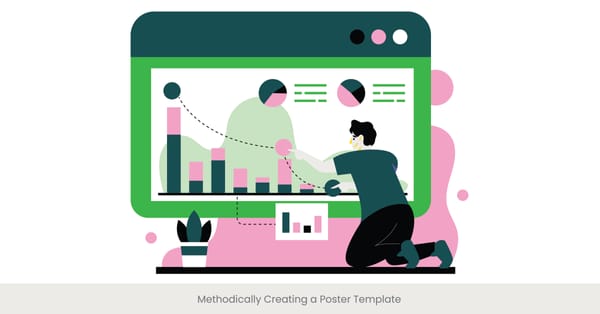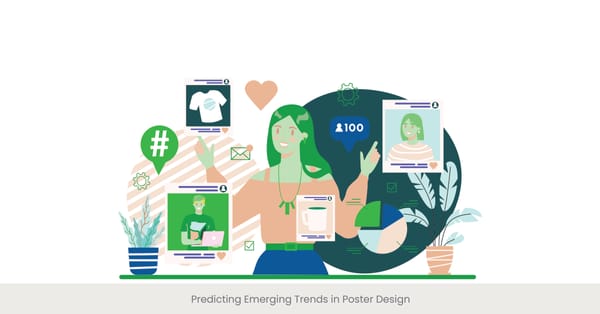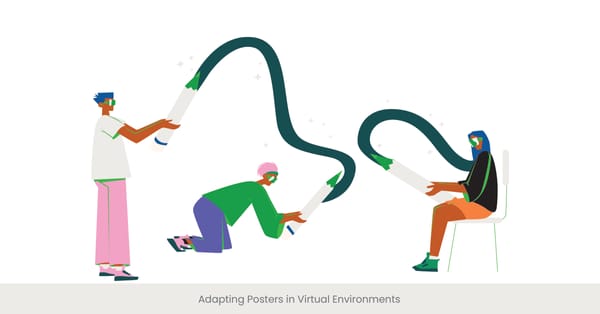
Writing Attention-Grabbing Headlines
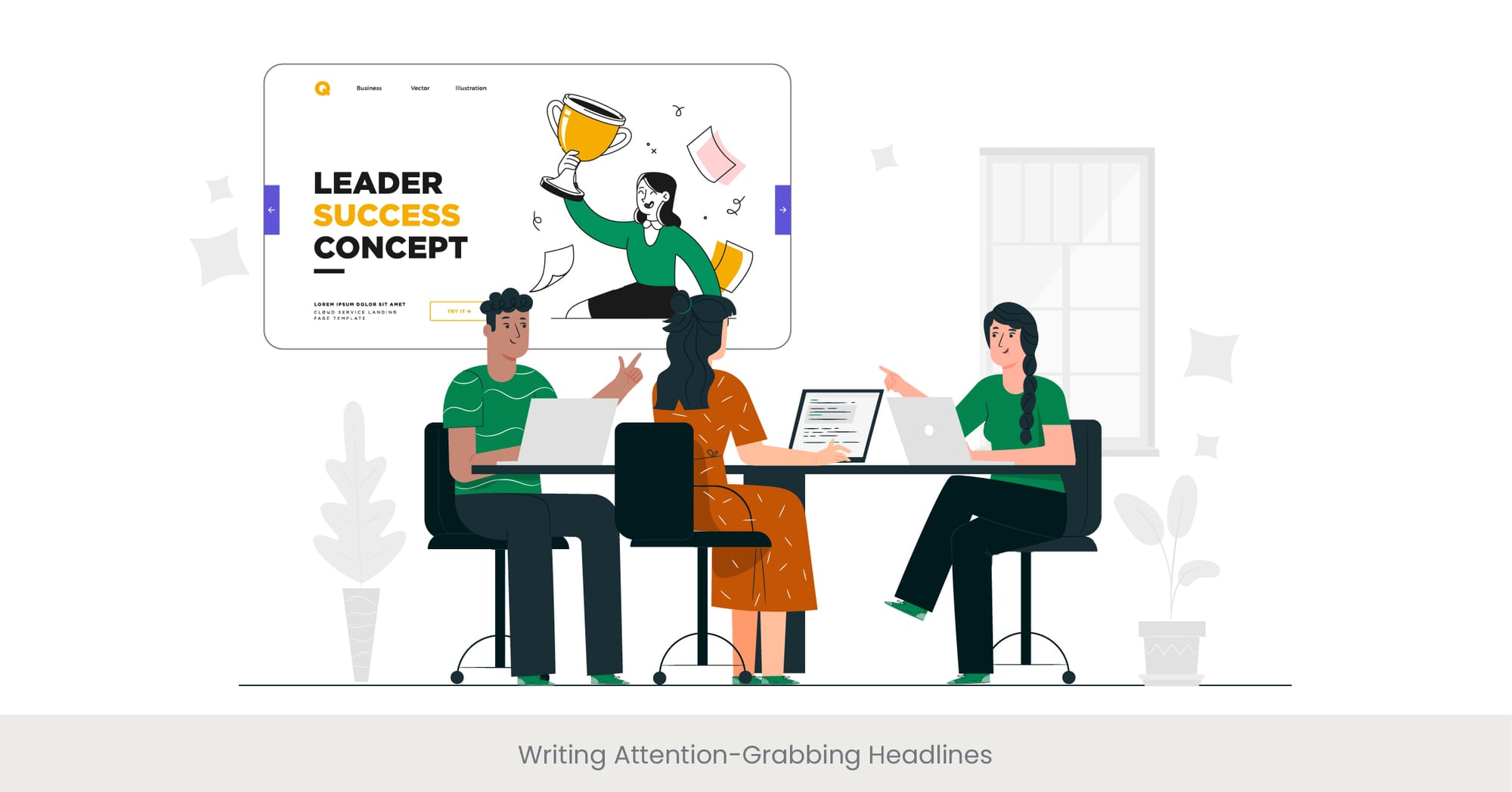
Introduction: Crafting the Gateway
The art of crafting attention-grabbing headlines is pivotal in the realm of digital and print media. A headline serves as the gateway to the content, enticing readers to delve deeper into the narrative. In the context of academic and research presentations, such as research posters or scientific posters, the headline not only grabs attention but also succinctly conveys the essence or theme of the study or project. The challenge lies in striking a balance between being compelling and maintaining the integrity of the scientific inquiry. To achieve this, poster presentation coaching can help researchers understand how to create titles that captivate and resonate with their audience.
Background: The Science Behind the Art
Headlines are not just strings of words; they are the result of careful consideration, combining psychological principles with linguistic flair. For research and academic posters, this is even more crucial. The headline must resonate with the target audience, whether it's in a classroom setting, a scientific conference, or an online repository of academic posters. It's about making an immediate impact, using a limited word count to make a lasting impression. Historical trends in academic publishing show a shift toward more engaging titles, reflecting the necessity to stand out in a crowded field. One of the key tools in crafting effective titles is understanding how poster presentation tools can help streamline the process.
Real-World Examples: Success Stories
Consider the difference in engagement between posters titled "Analysis of Water Quality Parameters" versus "Unveiling the Secrets of Your Drinking Water: A Comprehensive Study." Both may cover similar research, but the latter is more likely to draw in a broader audience, including students and non-specialists, by sparking curiosity. Successful examples often include action words, pose questions, or tease the findings in a way that prompts the viewer to learn more. In academic settings, such as classroom presentations or scientific expos, the most effective posters are those that can communicate their message at a glance, combining striking visuals with compelling titles.
Referencing External Sources
Studies in marketing and academic fields underline the importance of engaging headlines. For instance, a market research study published in the Journal of Academic Marketing observed a significant increase in engagement rates for articles and posters with dynamic titles. Another source, the Guide to Effective Poster Design, highlights the importance of action verbs and relevance to the target audience, noting that titles with these elements outperform others in terms of recall and engagement. This is corroborated by SEO research indicating that headlines incorporating targeted keywords, such as "research poster" or "scientific poster", perform better in online searches.
The Importance of Clarity and Brevity
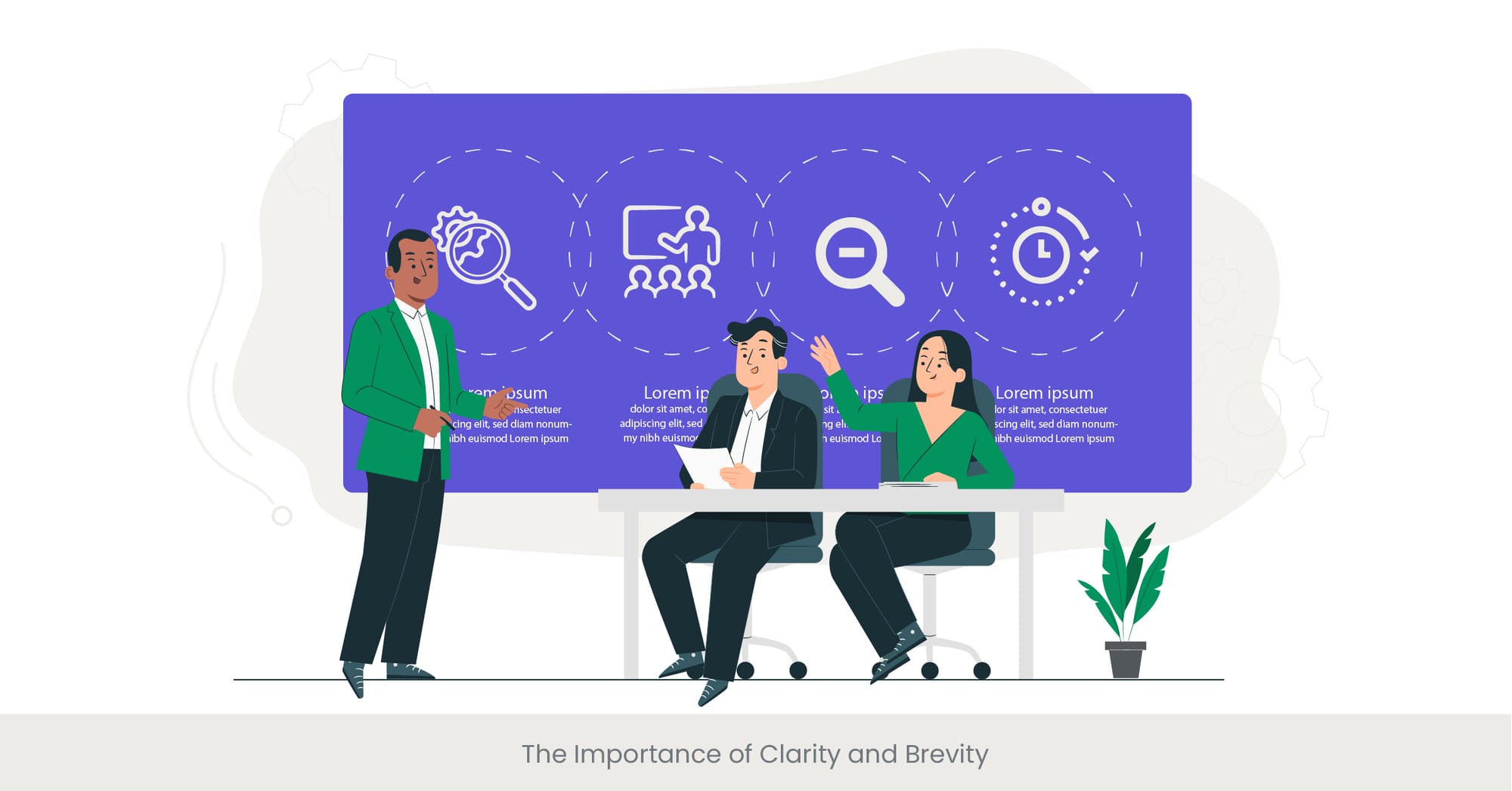
Clear and Concise: The Core of Communication
In the bustling world of information overload, the clarity and brevity of a headline or title can be the deciding factor between content that captivates and content that's overlooked. This truth holds significant weight in the academic environment and scientific community, where research posters, academic posters, and project posters serve as mediums to disseminate complex ideas succinctly. A well-crafted title must distill the essence of the research or project into a digestible format, ensuring that the core message is not just communicated, but also retained by the audience.
Peeling Back the Layers: Understanding the Impact
The principle of clarity and brevity in titles stems from the cognitive load theory, which posits that individuals have a limited capacity for processing information. In the context of poster design and presentation—be it a scientific poster in a conference hall or a project poster in a classroom—the title acts as a cognitive anchor, guiding the audience's understanding and retention of the material. Historical examples from academic literature show a trend towards more streamlined titles, reflecting an understanding of this cognitive limitation and the need to communicate more with less. Tools like poster presentation tools can help refine titles to meet this standard.
In Practice: A Closer Look
Consider the transformation of academic and research poster titles over time, from lengthy descriptions to more focused and impactful assertions. A title such as "A Comparative Study of Freshwater Ecosystems in Urban vs. Rural Settings" might be refined to "Urban vs. Rural: Battle for Freshwater Biodiversity" for greater impact. This not only makes the poster more appealing but also aids in capturing the essence of the research in a way that's immediately understandable. The use of clear, direct language and the elimination of unnecessary jargon are key strategies in achieving this effect. Real-world success stories often feature titles that make clever use of brevity, utilizing minimal words to convey maximum meaning, thereby enhancing the poster's appeal and memorability.
Expert Insights and Data
Research in the field of communication and education underscores the efficacy of clear and concise titles. A study published in the Educational Researcher highlights how students and academics alike prefer titles that are straightforward and succinct, noting a correlation between title clarity and the perceived quality of the research. Furthermore, an analysis conducted by Poster Design Analytics found that posters with titles under ten words significantly outperform longer titles in terms of audience engagement and recall. This data echoes the sentiments of industry experts who advocate for simplicity and precision in academic and scientific communication.
Using Action Words and Verbs
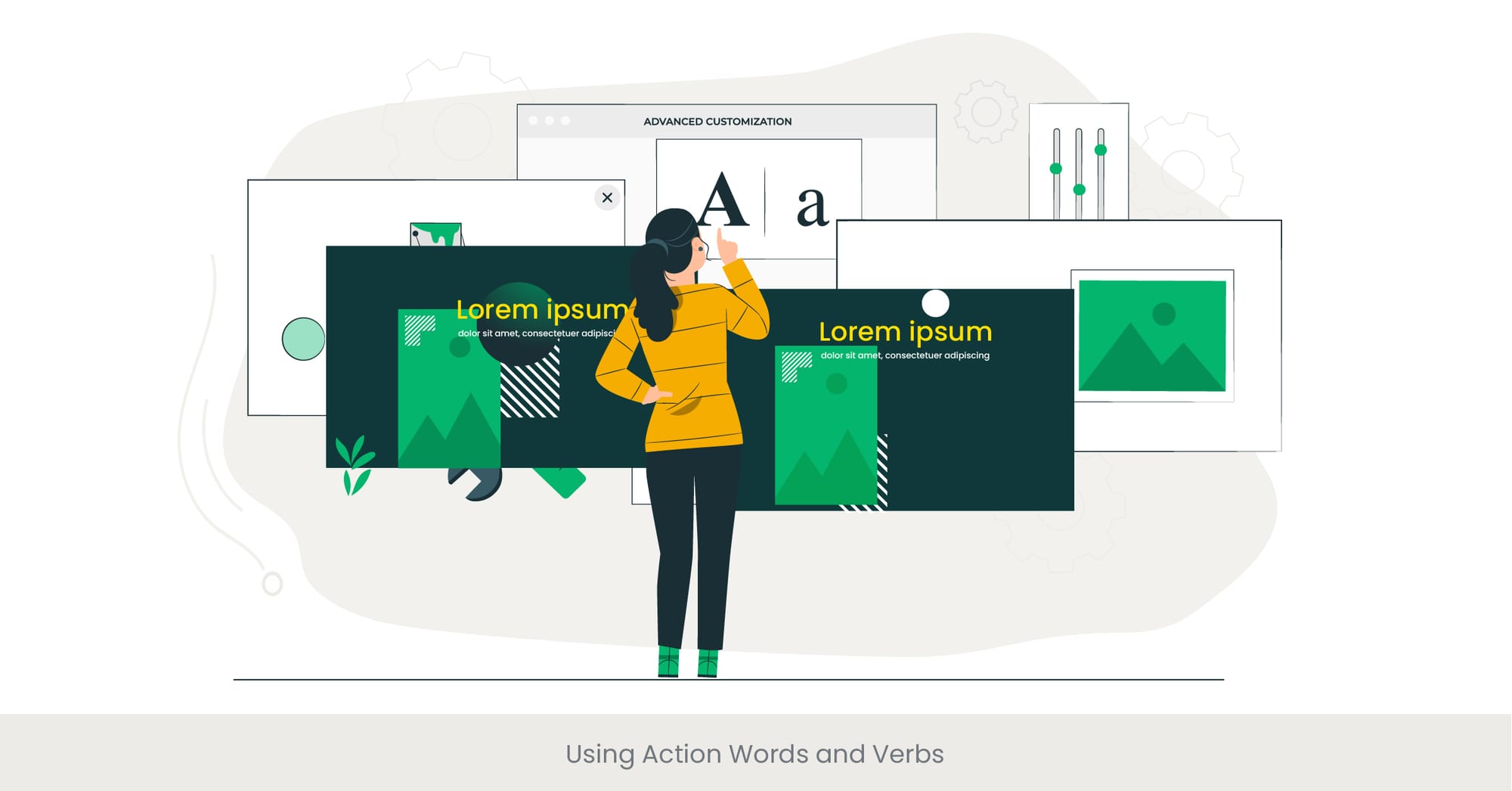
Engage and Excite: The Power of Action
In the realm of headline creation, particularly for academic and project presentations, the use of action words and verbs can significantly elevate the impact of a title. These dynamic words serve as catalysts, not only engaging the reader but also imparting a sense of immediacy and importance to the subject matter. Whether it's a research poster in a bustling conference hall or a scientific poster on display in an academic setting, incorporating action verbs can transform a passive title into a compelling call to explore further.
The Mechanics of Motion: Why Verbs Work
Action words and verbs inject energy into titles, making them more vivid and persuasive. This linguistic strategy is rooted in cognitive psychology, where dynamic verbs are shown to activate the motor cortex in the brain, leading to higher engagement levels. In educational and research contexts, such as classroom displays or scientific symposiums, titles that employ verbs like "discover," "explore," "unveil," or "transform" promise an active learning experience, enticing the audience with the prospect of gaining new insights or understanding complex phenomena. For crafting research poster narratives, using action verbs is key to drawing the audience into the unfolding story of the research.
Real-World Applications: Verbs in Action
An illustrative example of this strategy in action can be found in successful academic posters. A title like "Exploring the Impact of Urbanization on Local Biodiversity" uses the verb "exploring" to suggest an ongoing journey of discovery, making it more appealing than a static equivalent. Similarly, "Transforming Patient Care Through Telemedicine" indicates a dynamic shift, encouraging the viewer to delve into the transformative research behind the poster. These examples showcase how verbs can serve as powerful tools for drawing in an audience, promising them to play an active role in the learning process. Infographics for research posters can also enhance the message, pairing compelling verbs with visuals for maximum impact.
Supporting Evidence: The Impact of Verbs
Research supports the effectiveness of using action words in titles. A study in the Journal of Educational Psychology found that titles with action verbs are more likely to attract attention and be remembered than those without. Another analysis, focusing on academic and research posters, revealed that those employing action verbs in their titles saw higher engagement and interaction rates at conferences and seminars. This data highlights the importance of carefully selecting verbs to convey both the nature of the research and its potential impact, making the poster not just a static display but an invitation to engage.
Tailoring Titles to Your Audience
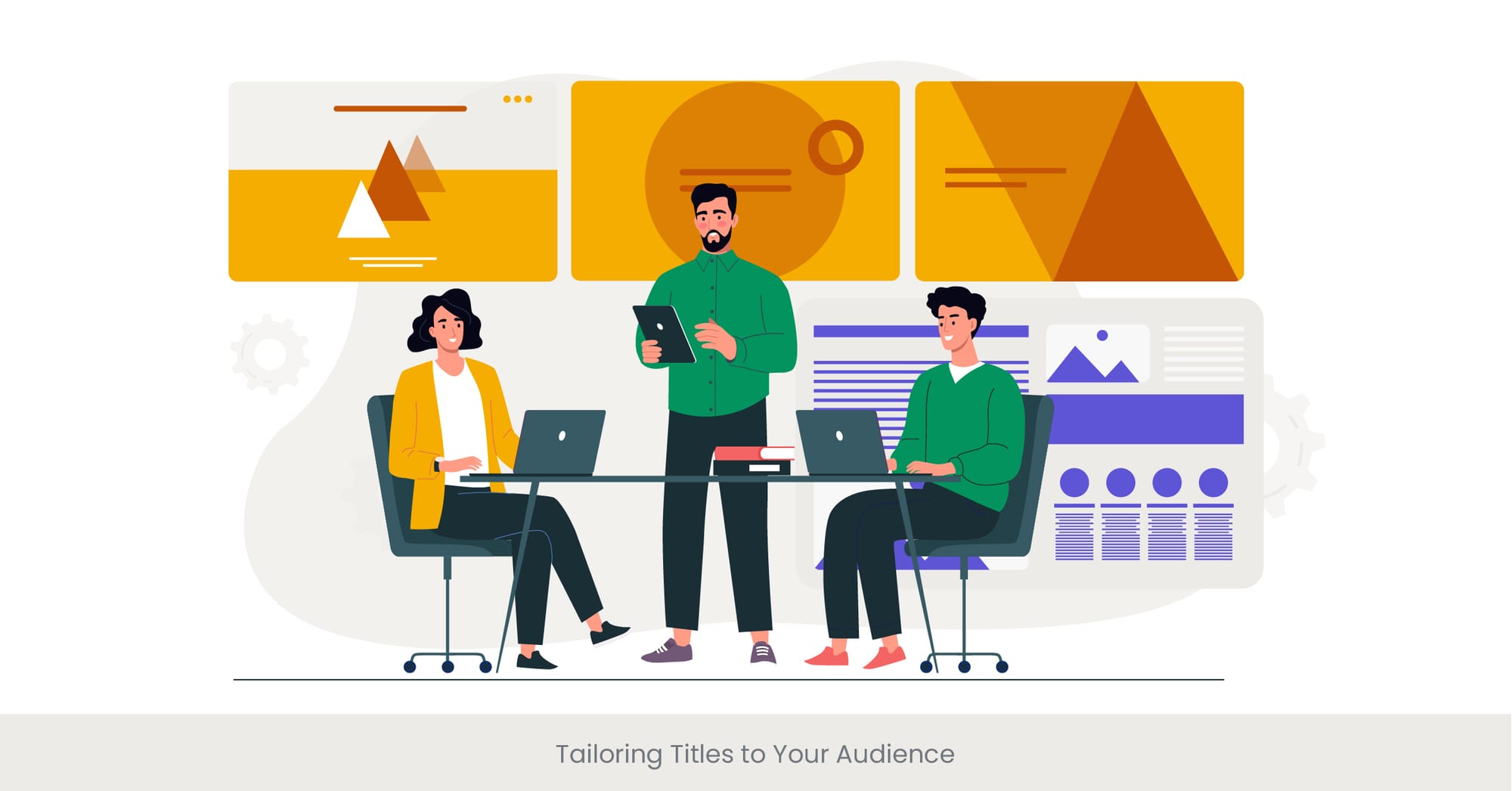
Crafting with the Audience in Mind: A Strategic Approach
The art of title creation extends beyond the mere collection and assembly of catchy phrases; it requires a deep understanding of one's audience. Tailoring titles to fit and match the specific interests, knowledge level, and expectations of your intended readers or viewers is crucial, especially in the diverse arenas of academic and project posters. This customization ensures that the title not only captures attention but also resonates on a personal level, increasing the likelihood of engagement, whether the audience consists of industry professionals, students, or the general public.
Understanding Your Audience: The Key to Relevance
Identifying the audience for a teacher or research poster or scientific poster involves considering various factors, such as their academic background, familiarity with the subject matter, and their interests. For instance, a poster designed for a classroom setting might use simpler language and focus on educational outcomes to inspire students, whereas one intended for a scientific conference might incorporate more specialized terminology to convey the depth of research to experts in the field. The goal is to bridge the gap between the presenter's knowledge and the audience's understanding, making the content accessible and engaging.
Strategies for Audience Engagement: Examples in Practice
An effective way to tailor titles is to consider what aspect of your research or project will most intrigue your audience. For a classroom presentation, a title like "The Magic of Photosynthesis: Turning Sunlight into Life" can spark curiosity among students by presenting a common scientific concept as a fascinating process. Conversely, for a professional scientific audience, a title such as "Advancing Photosynthetic Efficiency: A Molecular Approach" targets their sophisticated understanding and highlights the novelty of the research. These examples demonstrate how adjusting the language and focus of a title can make the content more appealing to different audiences.
Insights and Validation: Backed by Research
Studies in educational psychology and communication have shown that audience-tailored content significantly enhances comprehension and retention. A review in the Journal of Science Communication emphasizes the importance of audience analysis in scientific poster design, noting that posters with audience-adapted titles achieve higher engagement and dissemination rates. Furthermore, feedback mechanisms, such as surveys and discussions, can provide valuable insights into audience preferences, allowing for more effective title customization in future presentations.
A/B Testing Titles in Different Forums
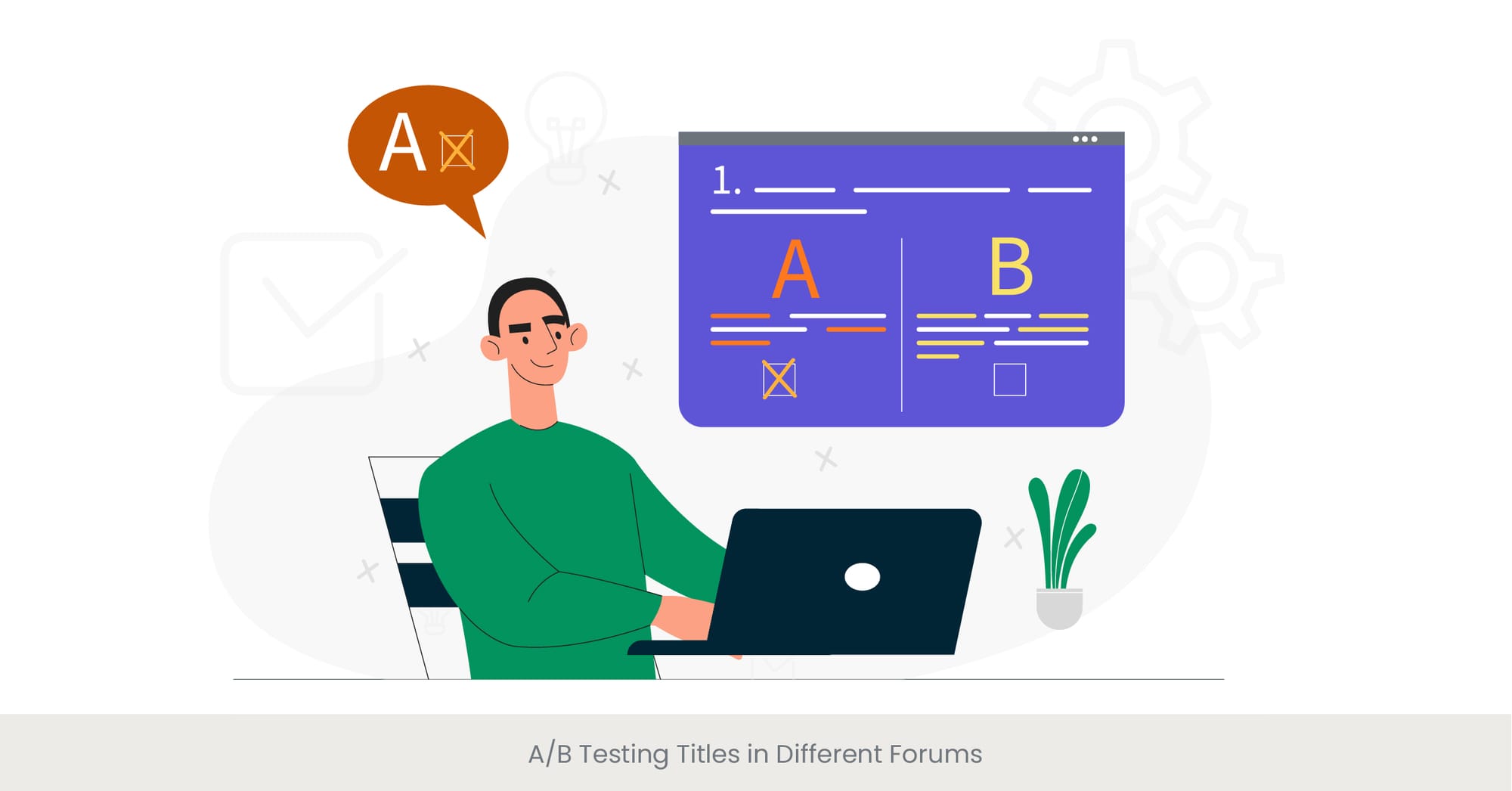
The Experimentation Edge: A/B Testing Explained
A/B testing, a staple in the world of digital marketing, is increasingly finding its relevance in academic and research communications, especially in the strategic crafting of titles for posters and presentations. This method involves comparing two versions of a title (A and B) to determine which one performs better in terms of engaging the target audience. By applying this approach to titles for research posters, scientific posters, or even project posters, researchers and academics can empirically identify the most compelling way to present their work, whether in classroom discussions, academic conferences, or online platforms.
The Backbone of A/B Testing: Understanding the Process
The process of A/B testing a title involves presenting the two variants to a similar audience under comparable conditions and measuring their performance against predefined metrics, such as click-through rates, engagement levels, or feedback scores. This method offers invaluable insights into how subtle changes in wording, tone, or structure can significantly affect the audience's interest and interaction with the content. For instance, testing "The Impact of Climate Change on Coral Reefs" against "Coral Reefs in Crisis: A Climate Change Perspective" in different forums could reveal preferences that might not be immediately apparent through conventional feedback methods.
Real-World Application: Titles That Talk
Implementing A/B testing in an academic setting involves selecting platforms where the audience actively engages with research content. Online academic forums, social media groups dedicated to scientific communication, and email newsletters within academic institutions are prime candidates for such experimentation. By analyzing the engagement data from these tests, presenters can refine their titles to better capture the essence of their work and the attention of their audience. For example, a study on poster presentations at a recent educational technology conference demonstrated that titles framed as questions generated more discussion and interaction than those presented as statements.
Evidence-Based Title Optimization: The Results Speak
The effectiveness of A/B testing in optimizing poster titles is supported by research in both marketing and academic fields. A publication in the Journal of Academic Marketing highlighted a case where A/B testing led to a 30% increase in engagement for an academic poster session. Similarly, a study featured in the International Journal of Scientific Communication found that titles optimized through A/B testing not only attracted more viewers but also facilitated deeper discussions and questions, enhancing the overall impact of the research presentation.
Want Your Research to Stand Out? Let Us Help!
Read Our Latest Blogs on Presentation Design
Incorporating Keywords for SEO

Optimizing for Visibility: The Role of SEO
In the digital age, the visibility of academic and research content is increasingly governed by search engine optimization (SEO). For researchers and educators aiming to increase the reach of their posters—whether research posters, academic posters, or class project posters—incorporating relevant keywords into their titles is a strategic necessity. SEO practices ensure that your work is discoverable by a wider audience, including peers, students, and the general public, who search for topics of interest online.
Keywords: The Foundation of SEO
At the heart of SEO lies the judicious selection and incorporation of keywords—terms or phrases that your target audience is likely to use when searching for information or services related to your poster's topic. For academic posters and research posters, this might include specific terminology, concepts, or methodologies pertinent to the study. The challenge lies in integrating these keywords naturally into the page and title, ensuring that it remains engaging and informative while also being optimized for search engines.
Strategic Keyword Integration: Balancing Act
The effective integration of keywords into a poster title requires a balance between readability and SEO. For example, a title for a scientific poster on climate change might benefit from keywords such as "global warming," "climate action," or "environmental impact." A well-optimized title might read, "Global Warming: Analyzing the Environmental Impact and Urgency for Climate Action." This title not only incorporates key phrases likely to be searched for but also maintains clarity and relevance to the subject matter.
The Proof Is in the Data: SEO Success Stories
Evidence of the importance of SEO in academic and research dissemination is mounting. Studies in digital marketing, business, and scientific communication have shown that content with well-optimized titles experiences significantly higher visibility and engagement online. Research published in the Journal of Digital Science Communication found that academic articles with titles containing high-search-volume keywords received more citations and downloads, underscoring the tangible benefits of SEO practices in the scholarly community.
Boost Your Visibility with Professional Design and SEO Strategies
Read Our Case Studies for Inspiration
Emotional Appeal in Headlines
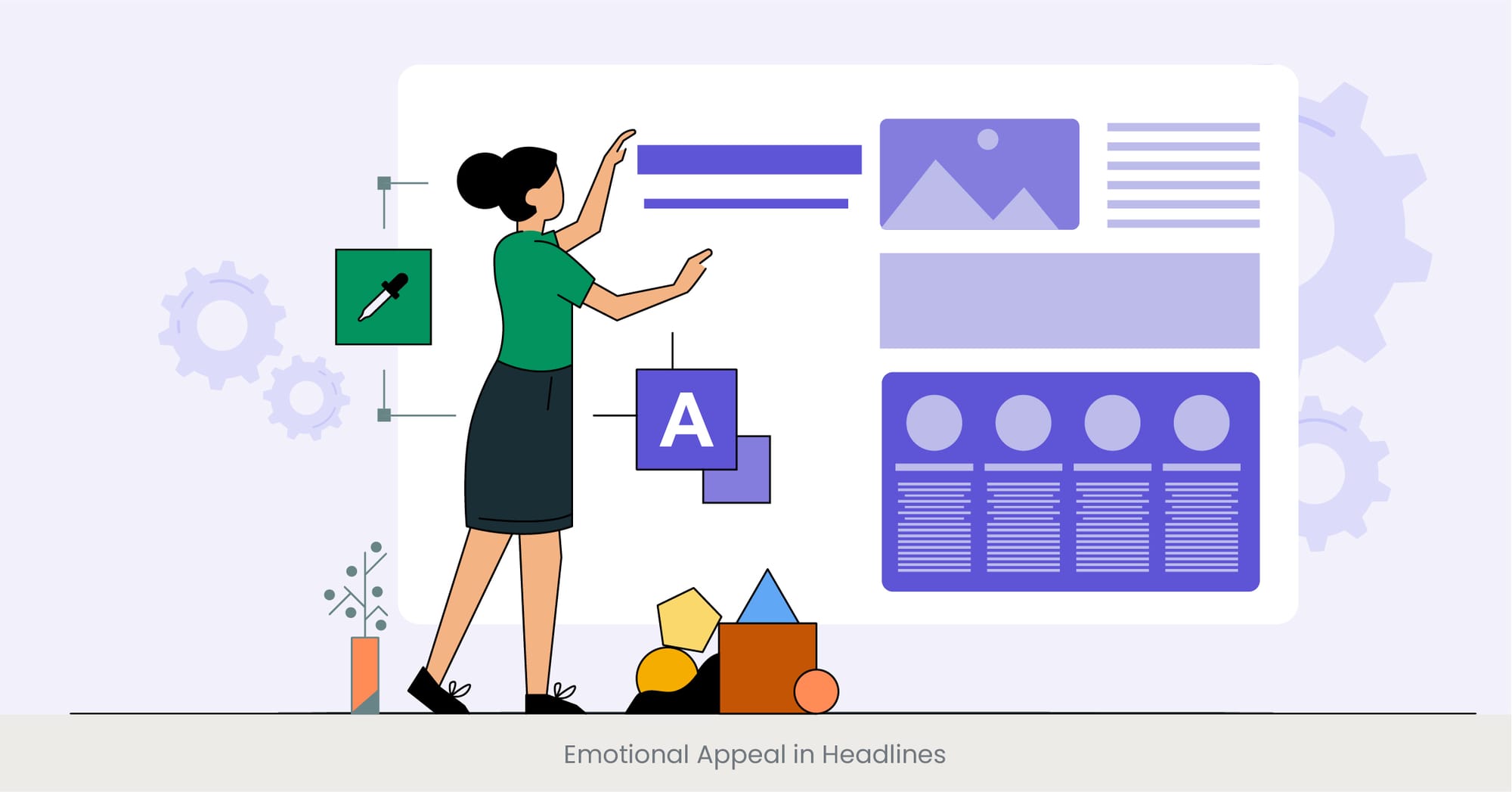
Captivating Hearts and Minds: The Essence of Emotional Appeal
The power of emotional appeal in headlines cannot be overstated, especially in the context of academic and research communications. While the factual accuracy and scientific rigor of a research poster or academic event poster are paramount, incorporating an element of emotional resonance in the title can significantly enhance its impact. This strategy taps into the human tendency to be drawn to content that evokes feelings, whether it's curiosity, concern, inspiration, or awe, thereby broadening the audience's engagement with scholarly work.
The Psychology Behind Emotional Engagement
Emotional appeal in headlines works by connecting with the audience on a personal level, making the research more relatable and memorable. This connection is crucial in fields where the subject matter can seem distant or abstract to the layperson. By humanizing the research, titles that evoke emotion can inspire a deeper interest and understanding among a diverse audience, from students in a classroom to participants in a scientific conference.
Harnessing Emotion: Practical Applications
For instance, a research poster titled "The Silent Decline: Emotional Well-being in High-Pressure Academic Environments" uses emotional appeal to draw attention to the mental health impacts of academic job stress. Similarly, "Facing the Tide: Coastal Communities' Brave Stand Against Rising Sea Levels" evokes a sense of urgency and resilience in environmental research. These titles go beyond mere description, inviting the audience to engage with the research on an emotional level, thereby fostering a deeper connection and discussion around the topics presented.
Empirical Evidence: Emotional Appeal in Action
Research in marketing and communication has consistently shown that headlines with emotional appeal tend to perform better in terms of engagement and dissemination. A study published in the Journal of Emotional Marketing revealed that content with emotionally charged titles received significantly more shares and comments on social media platforms compared to those with neutral headlines. Additionally, academic studies have found that research posters incorporating emotional elements in their titles are more likely to be remembered and cited, demonstrating the efficacy of this approach in academic settings.
Refining Your Title? Let’s Make It Shine Together
Common Pitfalls in Title Creation
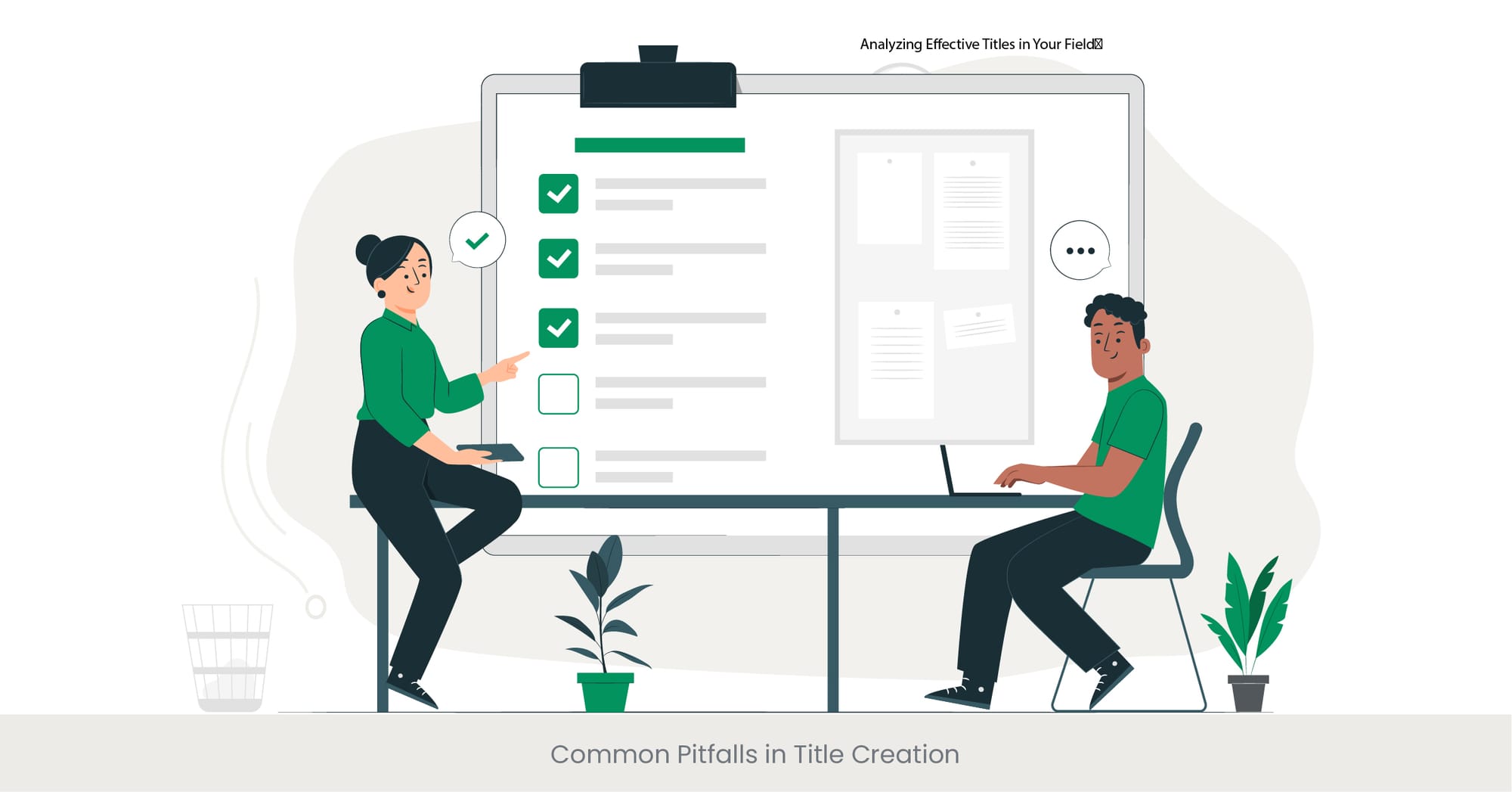
Navigating the Title Terrain: Avoiding Common Mistakes
The process of crafting an engaging and effective title for a research poster, academic poster, or any scholarly work is fraught with potential pitfalls. Awareness of these common mistakes is essential for academics and researchers who aim to communicate their findings effectively. A well-intentioned title can easily mislead, confuse, or even dissuade the intended audience if not carefully constructed. Recognizing and avoiding these pitfalls can significantly enhance the clarity, appeal, and impact of your work.
Pitfall #1: Overcomplication and Jargon
One of the most frequent missteps is the use of overly complex language or excessive jargon. While specialized terminology is sometimes necessary, titles that are too dense can alienate a broader audience, including students and non-specialists. The key is to strike a balance, ensuring the title is accessible to those within the field while also being inviting to those outside it. For example, a title like "Anthropogenic Effects on Biogenic Carbon Fluxes" might be more engaging and understandable when simplified to "Human Impact on Carbon Movement in Nature."
Pitfall #2: Vagueness and Lack of Specificity
A title that is too vague or broad fails to convey the essence and direction of the research, making it difficult for the audience to grasp the poster's focus. Specificity is crucial in capturing the attention of those who are most interested in your work. Instead of a generic title like "The Future of Our Oceans," a more specific and engaging title could be "Preserving Marine Biodiversity: Strategies for the Next Decade."
Pitfall #3: Misleading or Sensationalist Language
While emotional appeal and curiosity are effective tools, there's a fine line between engaging the audience and misleading them. Titles that promise more than the research delivers or use sensationalist language can damage credibility and trust. It's important to ensure that the title accurately reflects the content and findings of the poster without resorting to clickbait tactics.
Expert Advice: Crafting Titles with Precision
Studies and expert recommendations emphasize the importance of clear, accurate, and audience-tailored titles. A publication in the Journal of Academic Publishing highlights how misleading titles can lead to decreased citations and trust among the scientific community. Furthermore, workshops and seminars on effective communication in academia stress the need for precision and honesty in title creation, underscoring that the title is not just a label but an integral part of the research's public presentation.
Need Help Crafting the Perfect Title? We’ve Got You Covered.
Analyzing Effective Titles in Your Field
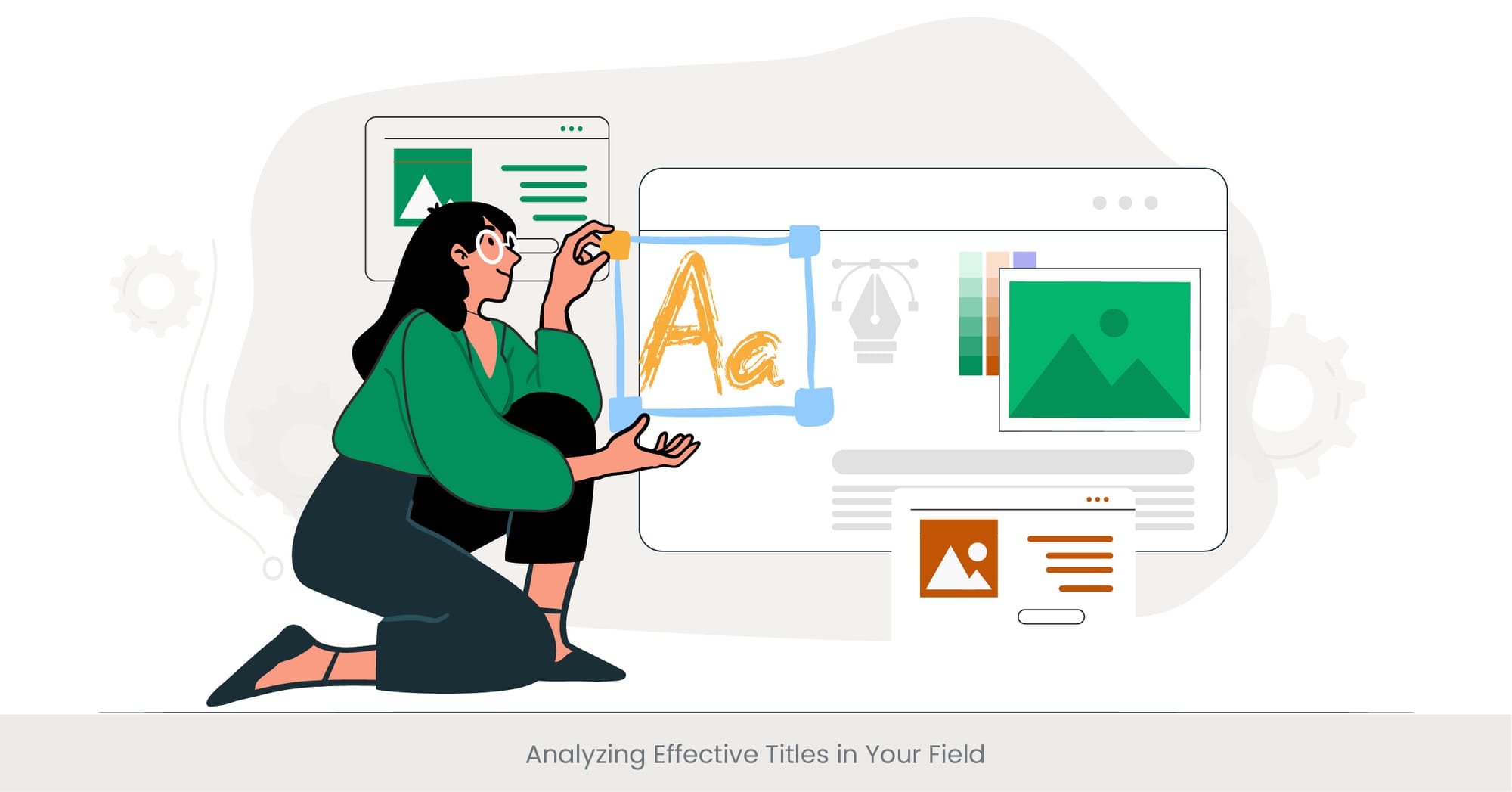
Decoding Success: The Anatomy of Impactful Titles
In the quest to craft compelling titles for research posters, academic posters, or project presentations, analyzing successful examples within your field offers invaluable insights. This process of deconstruction allows researchers and educators to understand the elements that contribute to a title's effectiveness in capturing attention, conveying the essence of the work, and enticing a targeted audience. By examining the characteristics of impactful titles, one can distill strategies and practices that elevate the presentation and dissemination of scholarly work.
Core Elements of Successful Titles
Effective titles often share common attributes, including clarity, brevity, relevance, and the strategic use of keywords and action verbs. However, the specific application of these elements can vary significantly across different academic disciplines and research areas. In scientific fields, for example, titles that concisely convey the study's scope, methodology, or findings tend to resonate well. Conversely, in the humanities, titles that invoke curiosity or provide a compelling narrative hook may be more engaging. Analyzing the titles of highly cited papers or popular presentations within your field can reveal patterns and preferences specific to your audience.
Case Studies: Learning from the Best
Consider the difference in engagement between titles in the field of environmental science. A study titled "Quantitative Analysis of Deforestation Rates" might attract a specialized audience, while "The Vanishing Forests: A Global Tragedy" could appeal to a broader, more diverse audience, including policymakers, educators, and the public. Similarly, in educational technology, a title like "Leveraging AI for Personalized Learning" succinctly signals the innovation and applicability of the research to both experts and teachers and practitioners interested in the latest teaching tools.
Empirical Insights: What the Research Says
Research on academic communication and digital marketing underscores the importance of title analysis. A review in the Journal of Scholarly Publishing found that titles incorporating trending keywords and clear value propositions tend to achieve higher visibility and engagement online. Another study highlighted the correlation between the emotional appeal in a title and the likelihood of it being shared on social media platforms, suggesting that titles that resonate on a personal level can significantly extend the reach of scholarly work.
Transform Your Research Posters with Expert Presentation Solutions
Title Feedback and Revision Strategies
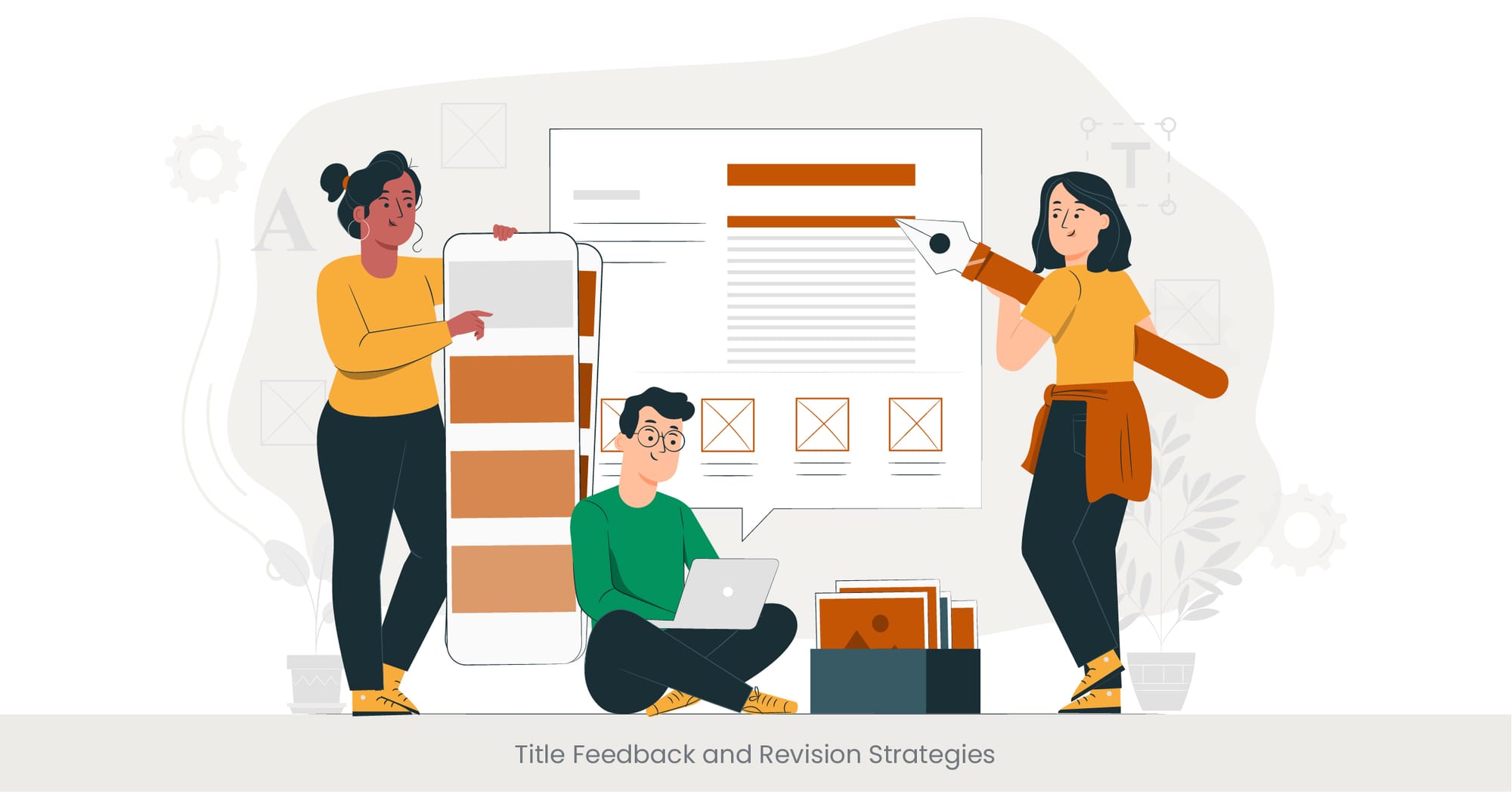
Refining Your Headline: The Iterative Process
The creation of a compelling title for your research poster, academic poster, or any scholarly output is seldom a one-step process. It often requires iteration, feedback, and refinement to hone in on and deliver the perfect headline image that captures the essence of your work and engages your target audience effectively. This continuous cycle of feedback and revision is crucial in ensuring that your title not only meets academic standards but also stands out in a crowded field of research.
Gathering Feedback: A Collaborative Effort
The initial step in refining your title involves gathering feedback from a diverse array of sources. This can include colleagues within your field, potential audience members such as students or practitioners, and even those outside your academic discipline to gauge broader appeal. Utilizing digital platforms, such as academic forums or social media groups, can also provide a wider range of perspectives. The key is to solicit honest, constructive feedback that can guide the revision process, highlighting areas of confusion, misinterpretation, or a complete lack of interest.
Revision Strategies: Fine-Tuning for Impact
Armed with feedback, the next step is to apply the suggestions and strategic revisions to your title. This may involve simplifying language to improve clarity, incorporating action verbs or emotional hooks to enhance engagement, or tweaking keywords for better SEO optimization. It's also important to consider the balance between scientific accuracy and accessibility features, ensuring that the title accurately reflects the content of your poster without alienating potential viewers.
Evidence-Based Refinement: Leveraging Research Insights
Support for the iterative process of title refinement comes from various studies in communication and marketing. Research published in the Journal of Research in Marketing demonstrates that titles revised based on audience feedback show significantly higher engagement and comprehension levels. Another study in the field of educational technology found that posters with titles tested and refined through A/B testing methods were more effective in capturing student interest and facilitating learning.
Thanks for reading and be sure to share this guide if you enjoyed it!
Hungry to read more guides? Here are a few guides you might like:
Key Design Principles Explained Thoroughly
What is on a research poster?
A research poster typically includes the title, abstract, introduction, methodology, results, conclusion, and references. Visual elements like charts, graphs, illustrations, logos, and images are also essential to illustrate key findings and make the poster more engaging. The title should be succinct yet descriptive, capturing the essence of the research in a way that draws the audience's interest.
How do you lay out a research poster?
The layout of a research poster should be logical and easy to follow, with a clear hierarchy of information. Start with the title at the top, followed by the abstract and introduction. The methodology, results, and conclusion sections should flow sequentially. Use columns, headers, and bullet points to organize information and ensure that visual elements complement the text, rather than overwhelm it.
How can I make my research poster look better?
To enhance your research poster's visual appeal, use high-quality images and consistent font styles. Color schemes and fonts should be attractive yet not distracting. Utilize white space effectively to prevent clutter. Ensure that charts and graphs are simple, clear, and directly relevant to your research findings. A well-designed poster balances aesthetic appeal with the clarity of the information presented.
What is the characteristic of a research poster?
A characteristic of a good research poster is its ability to communicate complex research findings in a concise and visually appealing manner. It should be self-explanatory, allowing viewers to understand the research's essence without needing extensive verbal explanation. Clarity, brevity, and visual impact are key characteristics that make a research poster effective.
What is in a scientific poster?
A scientific poster includes a clear and concise title, an abstract summarizing the study's main findings, and sections detailing the introduction, methodology, results, and conclusions. Visual aids such as graphs, charts, and photographs are crucial for illustrating key points and enhancing the poster's overall impact.
What makes a good scientist poster?
A good scientific poster effectively communicates the research question, methodology, results, and conclusions in a clear and concise manner. It engages the audience with a compelling title, well-organized layout, and visually appealing design. The poster should also be accessible to both experts and non-experts in the field.
How do you make a simple science poster?
To create a simple science poster, focus on the core message of your research. Use a clear and engaging title, a minimalistic design, and straightforward language. Visual elements should directly support and reinforce the research findings. Keep the layout simple and organized, with a logical flow of the relevant information throughout.
What are the methods on a scientific poster?
The methods section on a scientific poster should succinctly describe the research design, participants, materials, and procedures used in the study. It should of course provide enough detail for the audience to understand how the research was conducted and how the results were derived, without overwhelming them with too much technical information.
What is an academic poster?
An academic poster is a visual communication tool that researchers use to present their findings at conferences, seminars, or educational settings. It summarizes the research in a visually engaging format, allowing the audience to quickly grasp the study's objectives, methodology, results, and conclusions.
How to make a good academic poster?
Making a good academic poster involves focusing on clarity, conciseness, and visual appeal. Use a compelling title, ensure the text is readable from a distance, and employ graphs and images to illustrate key points. The poster should be well-organized, with a logical flow that guides the viewer through the research.

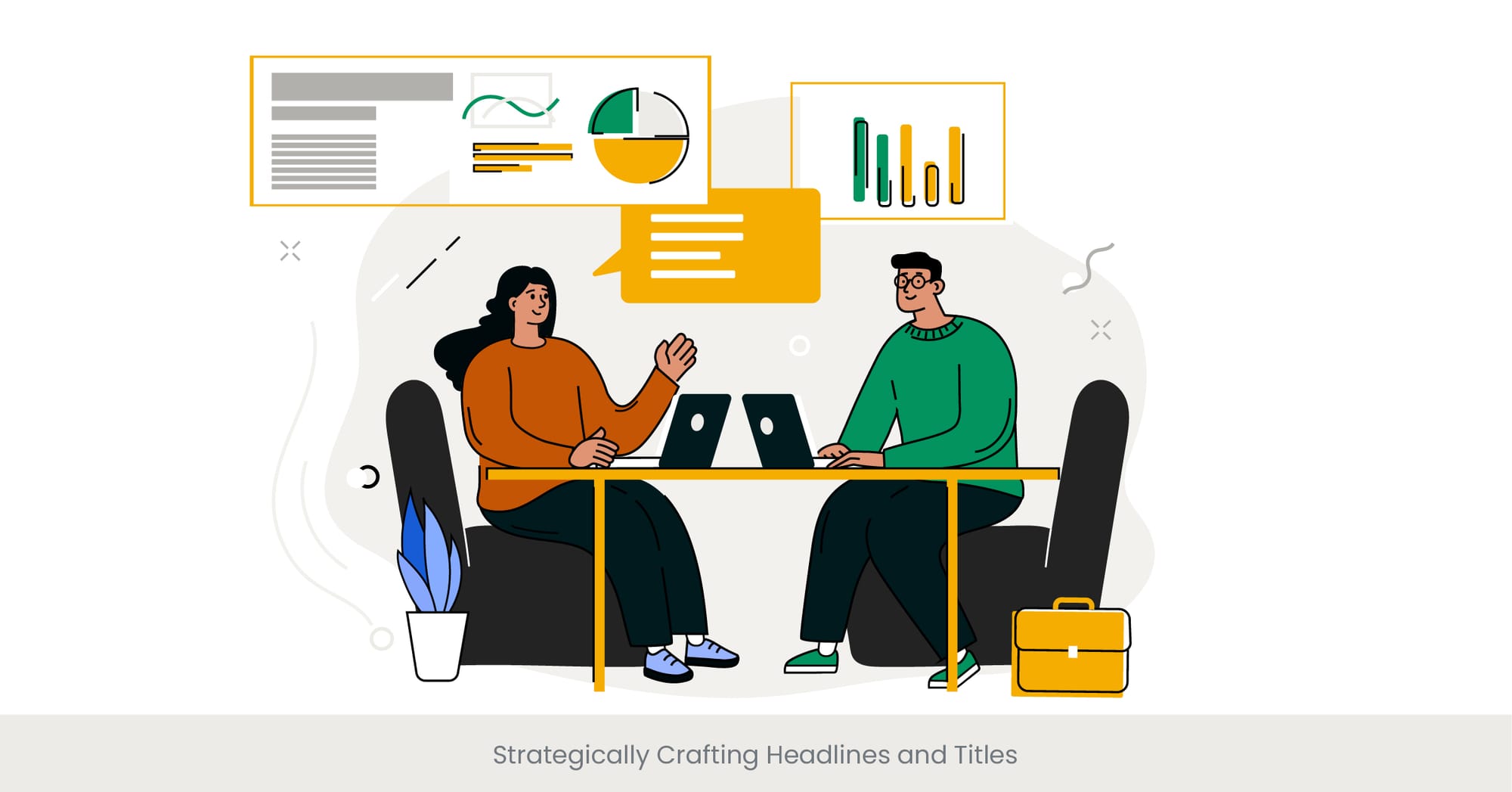

%20(1).jpg)
%20(1).jpg)
